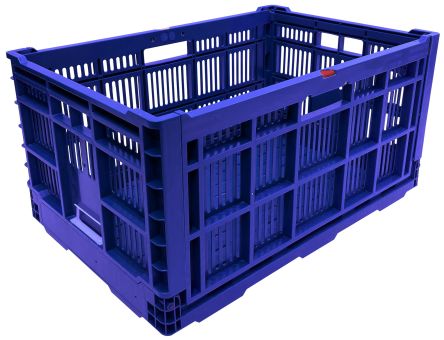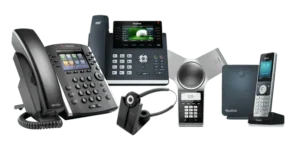
Access, Storage & Material Handling
Managing physical goods efficiently is a cornerstone of operational excellence. In industries where time, space, and safety are at a premium, access, storage, and material handling systems are no longer optional they are strategic assets. These integrated systems reduce waste, maximize floor space, and ensure that materials flow through a facility without delays or hazards.
How Do Access, Storage and Material Handling Systems Interconnect?
Access, storage and material handling are not standalone components—they form a unified ecosystem. When each element is carefully planned, businesses can improve throughput, reduce workplace risks, and adapt more easily to fluctuations in demand.
The Role of Access Systems
Access systems ensure that personnel can reach inventory or machinery safely and efficiently. They are especially important in environments with vertical storage, restricted zones, or maintenance requirements.
The Function of Storage Solutions
Storage systems organize products, tools, or raw materials in ways that support operational flow and inventory control. Whether static or mobile, these systems impact picking speed, product visibility, and available working space.
The Purpose of Material Handling
Material handling involves the transport, positioning, and management of items from receiving through dispatch. These systems impact speed, accuracy, and safety in every movement cycle.
What Are the Common Challenges in Material Handling?
Before investing in equipment, it’s important to understand the key pain points industries often face.
- Overcrowded workspaces: Poor storage planning leads to bottlenecks and clutter.
- Manual lifting risks: Relying on labor-intensive methods increases injury rates.
- Slow order fulfillment: Inefficient access or handling tools delay processing.
- Inventory damage: Inadequate material handling contributes to product loss.
- High operational costs: Excess labor, space waste, and downtime all drive up expenses.
What Types of Equipment Are Commonly Used?
Tools for Access
- Folding ladders: Versatile and space-saving solutions for temporary elevation needs.
- Work stands and scaffolds: Offer elevated, secure surfaces for inspection and repair.
- Loading ramps: Allow smooth transition of goods between floor levels and transport vehicles.
Storage Infrastructure
- Modular racking: Scalable systems to store large or bulky inventory.
- Rotating carousels: Automated units that reduce retrieval time and improve ergonomics.
- Clear bin organizers: Allow for quick identification of stored parts or tools.
- Stackable containers: Maximize space utilization while offering easy mobility.
Material Handling Systems
- Lift-assist devices: Reduce strain by supporting the weight of heavy items during lifting.
- Powered trolleys: Enhance mobility of goods without manual pushing.
- Flexible conveyors: Adapt to different layout needs, supporting dynamic workflows.
- Manual stackers: Compact tools for lifting and stacking in tight areas.
Which Industries Rely Most on These Solutions?
These systems are not confined to large industrial facilities they’re used across sectors of all sizes.
- Textile manufacturing: Requires vertical storage and ergonomic material transfer.
- Food and beverage: Needs hygienic storage and quick access to ingredients or packaging.
- Electrical workshops: Depend on organized tool storage and static-safe containers.
- Automotive assembly: Uses overhead handling systems and customized storage modules.
- Chemical plants: Rely on safe handling systems for drums, chemicals, and hazardous materials.
How Is Technology Transforming Access and Handling?
Technological advancements are significantly reshaping how businesses manage physical goods.
Automated Storage & Retrieval Systems (ASRS)
ASRS units use vertical space and computer-controlled movement to reduce retrieval times, errors, and floor congestion.
Real-Time Location Systems (RTLS)
RTLS enables live tracking of tools, components, or raw materials, helping teams locate resources instantly and avoid misplacement.
Wearable Tech Integration
Operators equipped with smart glasses or handheld scanners can receive digital instructions, reducing reliance on printed guides and improving efficiency.
Tips for Designing an Effective System
To make the most of access, storage, and material handling equipment, strategic planning is critical.
- Group items by frequency of use to minimize wasted movement.
- Zone storage areas to separate raw materials, in-process items, and finished goods.
- Use color coding to simplify navigation and inventory checks.
- Install vertical shelving to take advantage of underutilized overhead space.
- Perform flow analysis to identify delays, overlaps, or redundant motion.
Key Benefits of Implementing the Right Systems
When properly implemented, these systems offer measurable improvements across various operational dimensions.
Time Savings
Faster access and reduced search time lead to quicker task completion and better order turnaround.
Labor Efficiency
Operators spend less effort and time moving, lifting, or sorting materials, resulting in higher productivity with less fatigue.
Inventory Accuracy
Organized storage and controlled movement reduce errors in picking, packing, or dispatching.
Improved Morale and Safety
A well-structured facility supports a safer and more satisfying work environment, reducing strain and workplace incidents.
Looking to the Future
As global supply chains grow in complexity, access, storage, and handling systems will continue to evolve. The integration of robotics, data analytics, and modular designs will further improve flexibility and operational visibility.
Future systems will not only store or transport items, they will learn from usage patterns, automate decision-making, and adapt layouts based on real-time needs. Businesses that embrace these changes will stay competitive and resilient in increasingly dynamic markets.
Conclusion
Access, storage, and material handling are foundational components of industrial operations. They influence everything from how quickly an item is retrieved to how safely it is handled and how efficiently space is used. When designed with precision and supported by the right tools, these systems drive productivity, ensure safety, and support scalable growth.
Whether you are optimizing a small workshop or expanding a high-volume warehouse, investing in the right equipment and layout strategy can unlock long-term operational gains.

